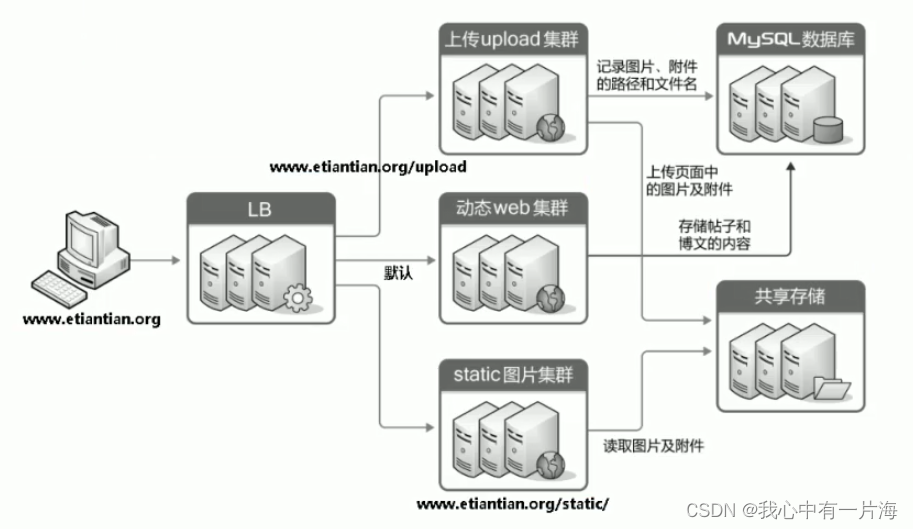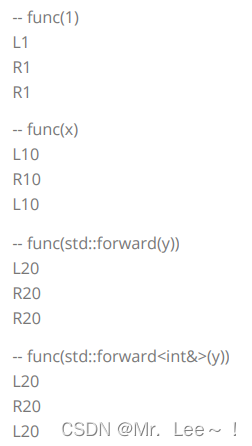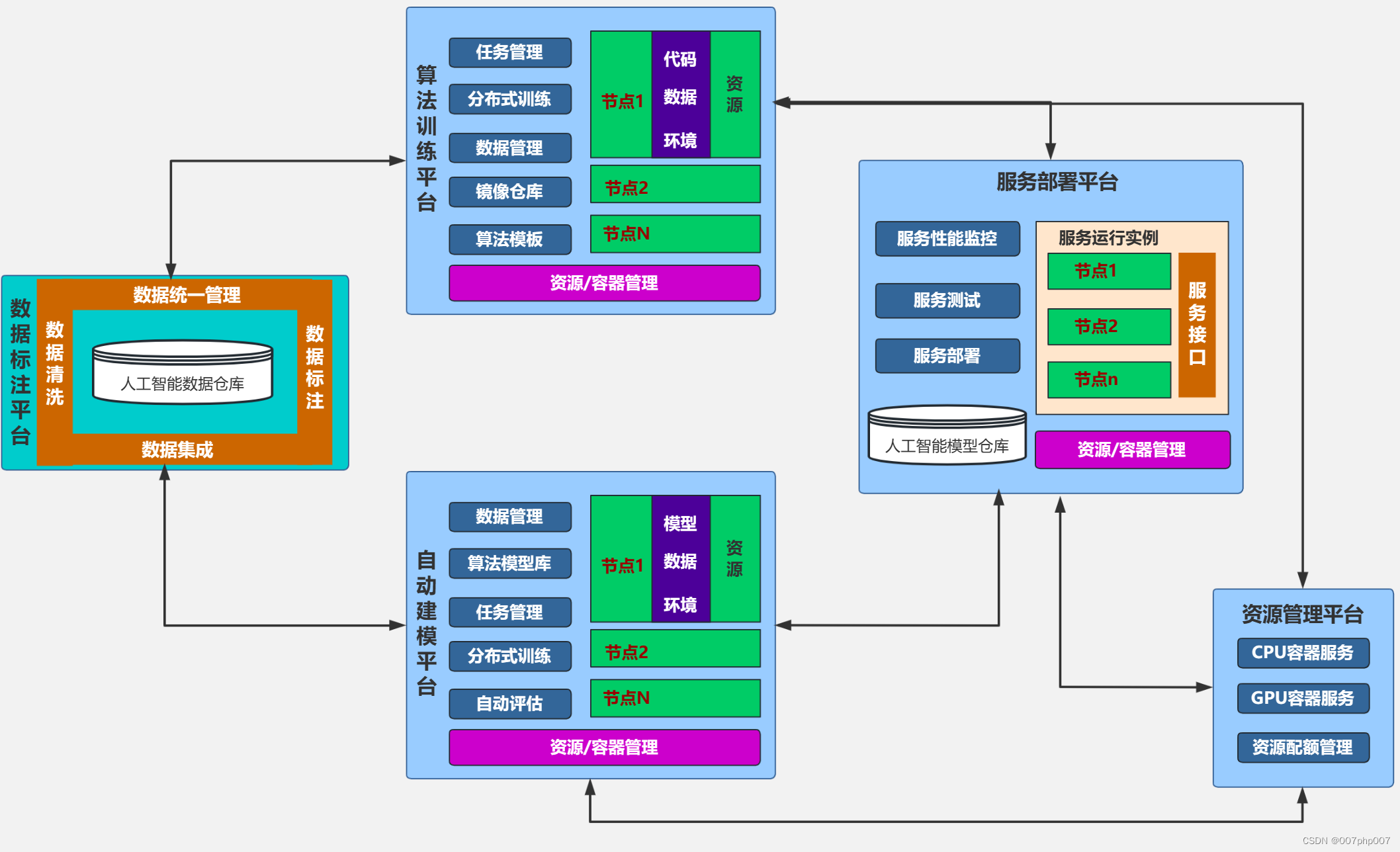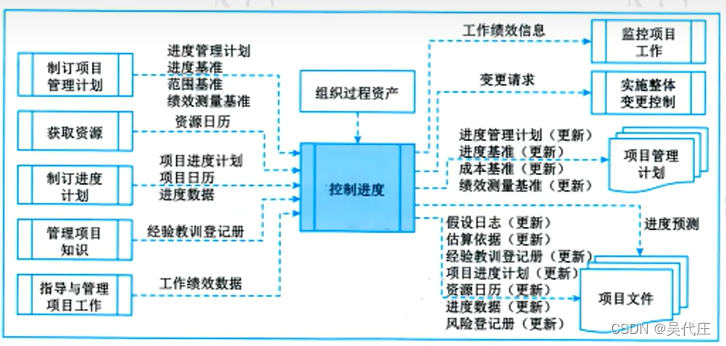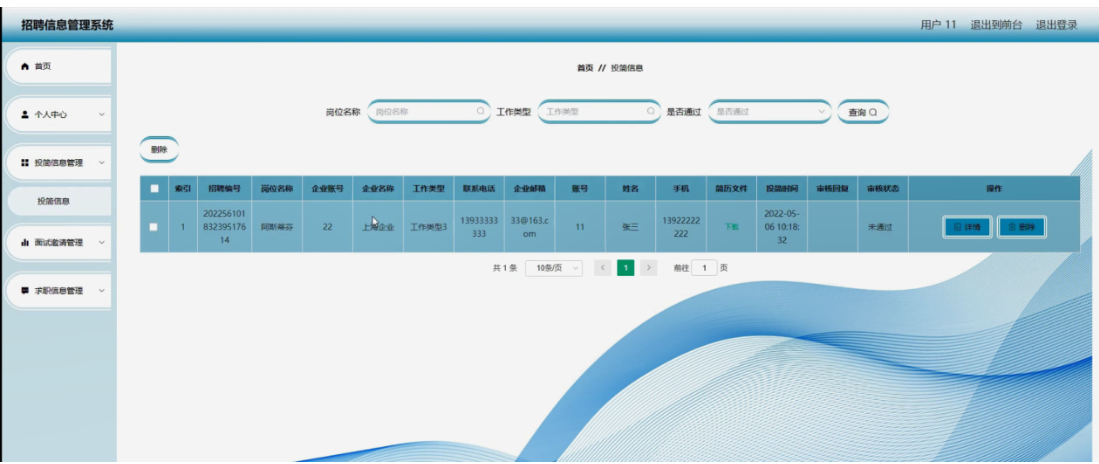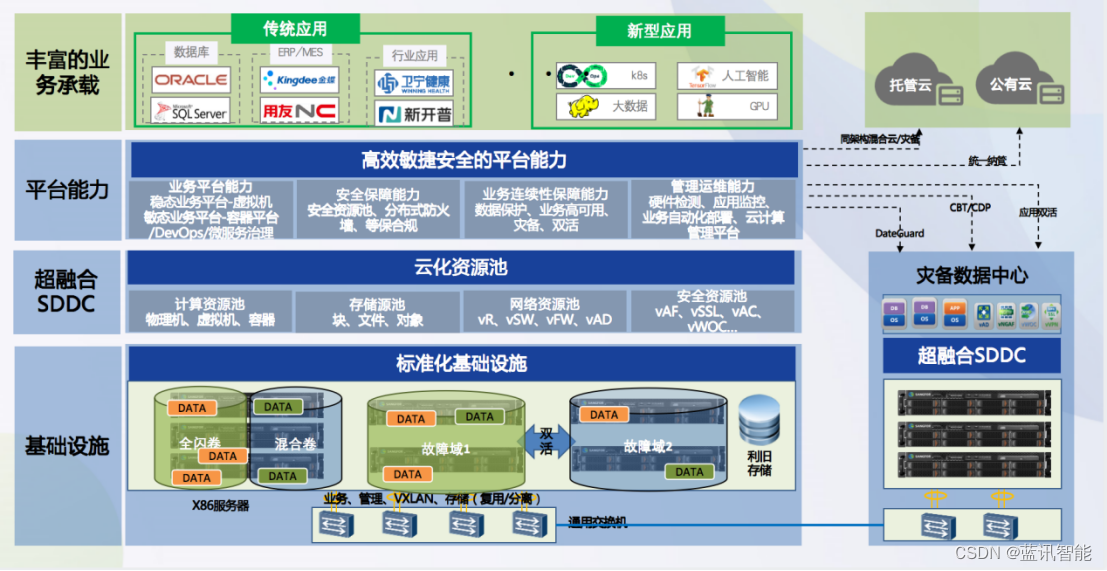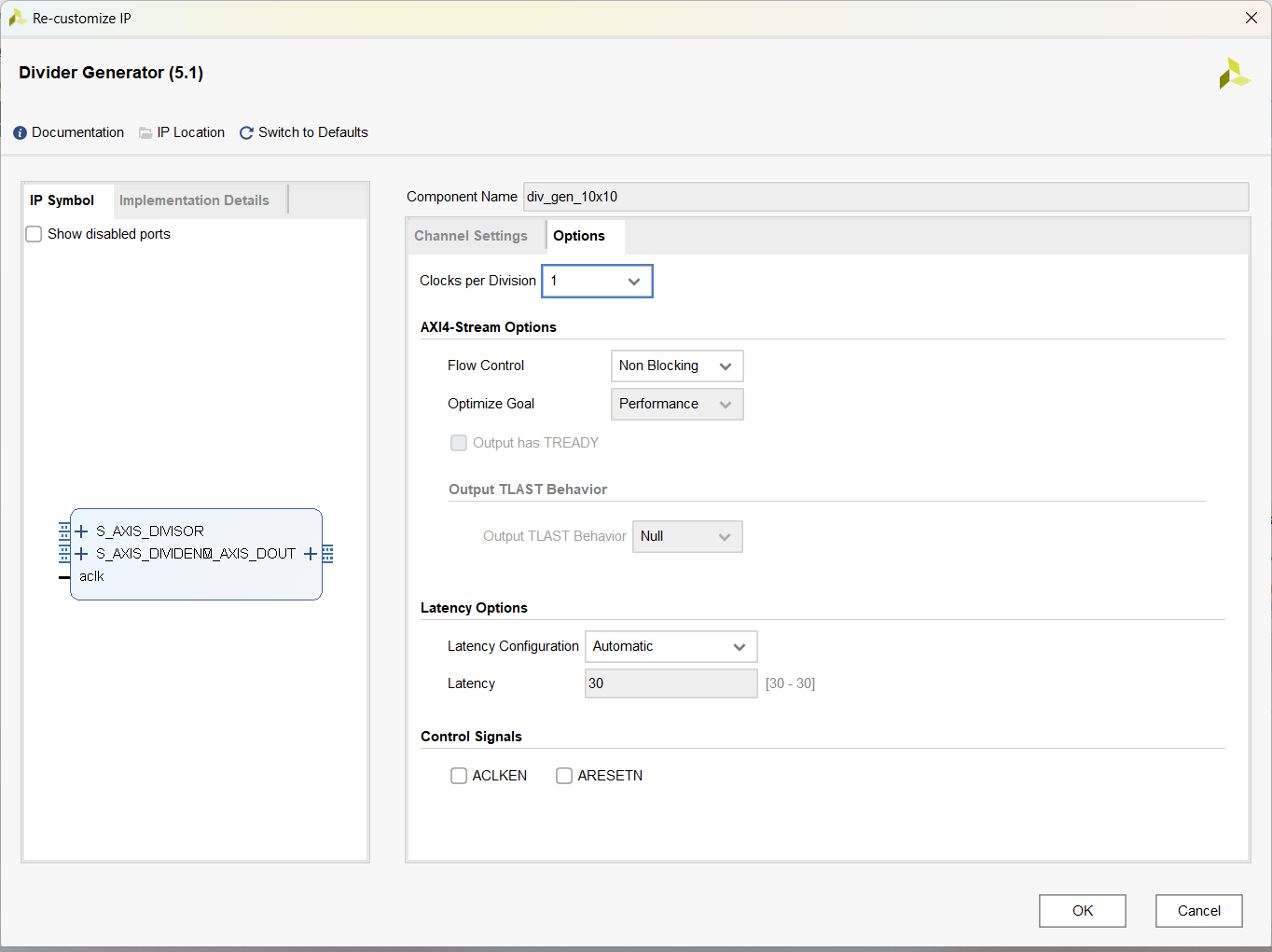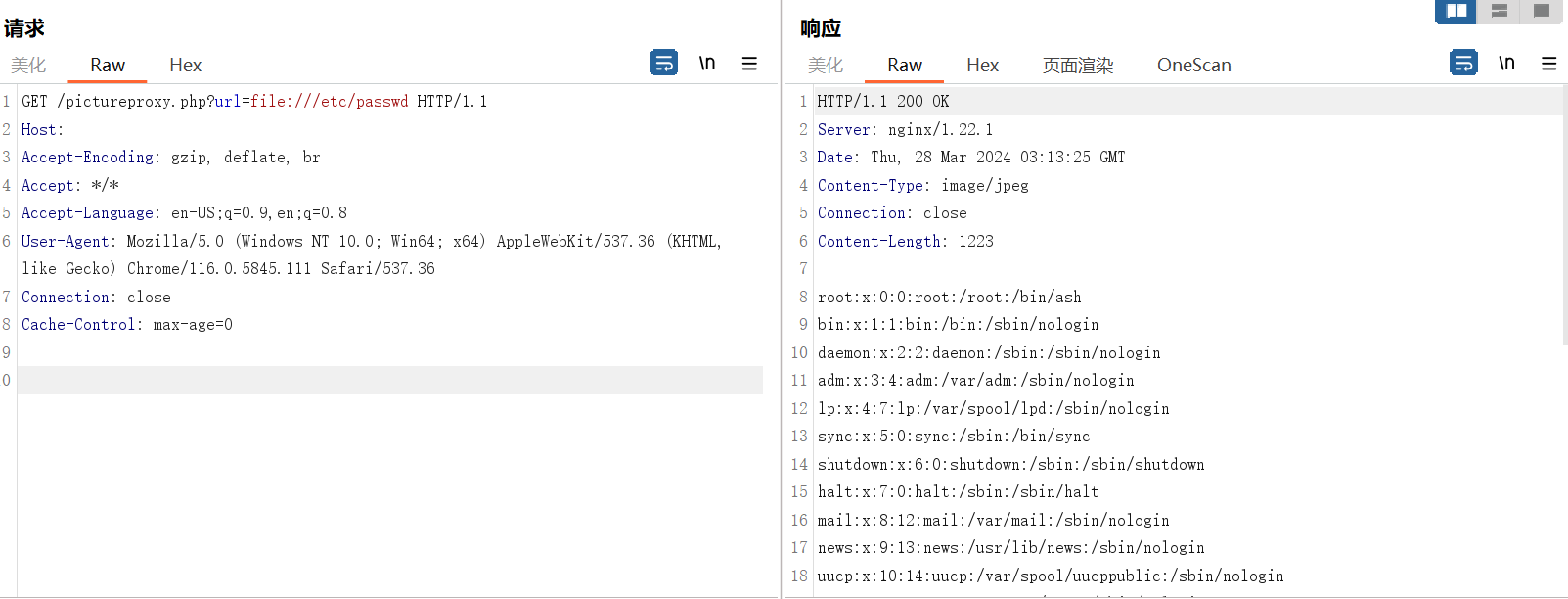
文章目录
- 🚀🚀🚀前言
- 一、1️⃣ 添加yolov5_GFPN.yaml文件
- 二、2️⃣添加extra_modules.py代码
- 三、3️⃣yolo.py文件添加内容
- 3.1 🎓 添加CSPStage模块
- 四、4️⃣实验结果
- 4.1 🎓 使用yolov5s.pt训练的结果对比
- 4.2 ✨ 使用yolov5l.pt训练的结果对比
- 4.3 ⭐️ 实验结果分析

👀🎉📜系列文章目录
必读【论文精读】DAMO-YOLO:兼顾速度与精度的高效目标检测框架( A Report on Real-Time Object Detection Design)
【YOLOv5改进系列(1)】高效涨点----使用EIoU、Alpha-IoU、SIoU、Focal-EIOU替换CIou
【YOLOv5改进系列(2)】高效涨点----Wise-IoU详细解读及使用Wise-IoU(WIOU)替换CIOU
【YOLOv5改进系列(3)】高效涨点----Optimal Transport Assignment:OTA最优传输方法
【YOLOv5改进系列(4)】高效涨点----添加可变形卷积DCNv2
【YOLOv5改进系列(5)】高效涨点----添加密集小目标检测NWD方法
🚀🚀🚀前言
⚡️DAMO-YOLO是阿里巴巴达摩院在2022年提出的一种模型,其实在当时yolov5和v6已经出来了,并且也有部分实时监测比较好的算法模型,但是当前检测框架在实际应用时仍然有以下几个痛点:
- ① 模型尺度变化不够灵活,难以适应不同的算力场景。如 YOLO 系列的检测框架,一般只提供 3-5 个模型的计算量,从十几到一百多 Flops 数量级,难以覆盖不同的算力场景。
- ② 多尺度检测能力弱,特别是小物体检测性能较差,这使得模型应用场景十分受限。比如在无人机检测场景,它们的效果往往都不太理想。
- ③ 速度/精度曲线不够理想,速度和精度难以同时兼容。
☀️针对上述情况,达摩院计算机视觉团队设计并开源了 DAMO-YOLO,DAMO-YOLO 主要着眼于工业落地。相比于其他的目标检测框架具有三个明显的技术优势:
- ① 整合了自研 NAS 技术,可低成本自定义模型,让用户充分发挥芯片算力。
- ② 结合 Efficient RepGFPN 以及 HeavyNeck 模型设计范式,能够很大程度上提高模型的多尺度检测能力,扩大模型应用范围。
- ③ 提出了全尺度通用的蒸馏技术,将大模型的知识转移到小模型上,在不带来推理负担的情况下,提升小模型的性能。
关于DAMO-YOLO的一些其他细节这里不做过多解释,像MAE-NAS技术进行 backbone 的搜索、蒸馏模型等技术如果感兴趣可以看一下这篇文章DAMO-YOLO:【论文精读】DAMO-YOLO:兼顾速度与精度的高效目标检测框架( A Report on Real-Time Object Detection Design)
🚀本文改进使用的是DAMO-YOLO 中的Efficient RepGFPN特征网络融合部分,该网络是在GFPN特征网络上进行改进的,因为GFPN有很多上采样操作并且并行化比较低,导致了Flops高效Latency低效;因此我使用Efficient RepGFPN方法去替换了yolov5中Neck部分的PANet融合方法;
实验方面我分别使用yolov5s.pt和yolov5l.pt两个权重来进行训练,然后将yolov5_GFPN.yaml的depth_multiple和width_multiple分别设置成(0.33,0.50)和(1.0,1.0)对标yolov5s和yolov5l。
实验结果: 与yolov5s基准模型相比,使用Efficient RepGFPN之后map@0.5反而下降了,但是替换之后与yolov5l基准模型相比,map@0.5提升了近4个百分点,同时f1置信分数也有所增加。至于为什么会出现这种情况,在实验总结部分我写出自己理解的一些解释。
一、1️⃣ 添加yolov5_GFPN.yaml文件
🚀在models文件下新建一个yolov5_GFPN.yaml文件,将如下代码复制到yaml文件中;我这里depth_multiple、width_multiple设置的都是1,需要使用yolov5l权重进行训练,如果想要使用yolov5s的权重训练,只需要将depth_multiple、width_multiple分别设置为0.33和0.5。
# YOLOv5 🚀 by Ultralytics, GPL-3.0 license
# Parameters
nc: 6 # number of classes
depth_multiple: 1.00 # model depth multiple
width_multiple: 1.00 # layer channel multiple
anchors:
- [ 10,13, 16,30, 33,23 ] # P3/8
- [ 30,61, 62,45, 59,119 ] # P4/16
- [ 116,90, 156,198, 373,326 ] # P5/32
# YOLOv5 v6.0 backbone
backbone:
# [from, number, module, args]
[ [ -1, 1, Conv, [ 64, 6, 2, 2 ] ], # 0-P1/2
[ -1, 1, Conv, [ 128, 3, 2 ] ], # 1-P2/4
[ -1, 3, C3, [ 128 ] ],
[ -1, 1, Conv, [ 256, 3, 2 ] ], # 3-P3/8
[ -1, 6, C3, [ 256 ] ],
[ -1, 1, Conv, [ 512, 3, 2 ] ], # 5-P4/16
[ -1, 9, C3, [ 512 ] ],
[ -1, 1, Conv, [ 1024, 3, 2 ] ], # 7-P5/32
[ -1, 3, C3, [ 1024 ] ],
[ -1, 1, SPPF, [ 1024, 5 ] ], # 9
]
# DAMO-YOLO GFPN Head
head:
[ [ -1, 1, Conv, [ 512, 1, 1 ] ], # 10 添加这个是为了使用1x1卷积进行降维
[ 6, 1, Conv, [ 512, 3, 2 ] ],
[ [ -1, 10 ], 1, Concat, [ 1 ] ],
[ -1, 3, CSPStage, [ 512 ] ], # 13
[ -1, 1, nn.Upsample, [ None, 2, 'nearest' ] ], #14
[ 4, 1, Conv, [ 256, 3, 2 ] ], # 15
[ [ 14, -1, 6 ], 1, Concat, [ 1 ] ],
[ -1, 3, CSPStage, [ 512 ] ], # 17
[ -1, 1, nn.Upsample, [ None, 2, 'nearest' ] ],
[ [ -1, 4 ], 1, Concat, [ 1 ] ],
[ -1, 3, CSPStage, [ 256 ] ], # 20
[ -1, 1, Conv, [ 256, 3, 2 ] ],
[ [ -1, 17 ], 1, Concat, [ 1 ] ],
[ -1, 3, CSPStage, [ 512 ] ], # 23
[ 17, 1, Conv, [ 256, 3, 2 ] ], # 24
[ 23, 1, Conv, [ 256, 3, 2 ] ], # 25
[ [ 13, 24, -1 ], 1, Concat, [ 1 ] ],
[ -1, 3, CSPStage, [ 1024 ] ], # 27
[ [ 20, 23, 27 ], 1, Detect, [ nc, anchors ] ], # Detect(P3, P4, P5)
]
二、2️⃣添加extra_modules.py代码
📌在models文件下新建一个extra_modules.py文件,将如下代码复制到文件中;这部分代码就是Efficient RepGFPN的实现方法。
import torch
import torch.nn as nn
import torch.nn.functional as F
def conv_bn(in_channels, out_channels, kernel_size, stride, padding, groups=1):
'''Basic cell for rep-style block, including conv and bn'''
result = nn.Sequential()
result.add_module(
'conv',
nn.Conv2d(in_channels=in_channels,
out_channels=out_channels,
kernel_size=kernel_size,
stride=stride,
padding=padding,
groups=groups,
bias=False))
result.add_module('bn', nn.BatchNorm2d(num_features=out_channels))
return result
class RepConv(nn.Module):
'''RepConv is a basic rep-style block, including training and deploy status
Code is based on https://github.com/DingXiaoH/RepVGG/blob/main/repvgg.py
'''
def __init__(self,
in_channels,
out_channels,
kernel_size=3,
stride=1,
padding=1,
dilation=1,
groups=1,
padding_mode='zeros',
deploy=False,
act='relu',
norm=None):
super(RepConv, self).__init__()
self.deploy = deploy
self.groups = groups
self.in_channels = in_channels
self.out_channels = out_channels
assert kernel_size == 3
assert padding == 1
padding_11 = padding - kernel_size // 2
if isinstance(act, str):
self.nonlinearity = get_activation(act)
else:
self.nonlinearity = act
if deploy:
self.rbr_reparam = nn.Conv2d(in_channels=in_channels,
out_channels=out_channels,
kernel_size=kernel_size,
stride=stride,
padding=padding,
dilation=dilation,
groups=groups,
bias=True,
padding_mode=padding_mode)
else:
self.rbr_identity = None
self.rbr_dense = conv_bn(in_channels=in_channels,
out_channels=out_channels,
kernel_size=kernel_size,
stride=stride,
padding=padding,
groups=groups)
self.rbr_1x1 = conv_bn(in_channels=in_channels,
out_channels=out_channels,
kernel_size=1,
stride=stride,
padding=padding_11,
groups=groups)
def forward(self, inputs):
'''Forward process'''
if hasattr(self, 'rbr_reparam'):
return self.nonlinearity(self.rbr_reparam(inputs))
if self.rbr_identity is None:
id_out = 0
else:
id_out = self.rbr_identity(inputs)
return self.nonlinearity(
self.rbr_dense(inputs) + self.rbr_1x1(inputs) + id_out)
def get_equivalent_kernel_bias(self):
kernel3x3, bias3x3 = self._fuse_bn_tensor(self.rbr_dense)
kernel1x1, bias1x1 = self._fuse_bn_tensor(self.rbr_1x1)
kernelid, biasid = self._fuse_bn_tensor(self.rbr_identity)
return kernel3x3 + self._pad_1x1_to_3x3_tensor(
kernel1x1) + kernelid, bias3x3 + bias1x1 + biasid
def _pad_1x1_to_3x3_tensor(self, kernel1x1):
if kernel1x1 is None:
return 0
else:
return torch.nn.functional.pad(kernel1x1, [1, 1, 1, 1])
def _fuse_bn_tensor(self, branch):
if branch is None:
return 0, 0
if isinstance(branch, nn.Sequential):
kernel = branch.conv.weight
running_mean = branch.bn.running_mean
running_var = branch.bn.running_var
gamma = branch.bn.weight
beta = branch.bn.bias
eps = branch.bn.eps
else:
assert isinstance(branch, nn.BatchNorm2d)
if not hasattr(self, 'id_tensor'):
input_dim = self.in_channels // self.groups
kernel_value = np.zeros((self.in_channels, input_dim, 3, 3),
dtype=np.float32)
for i in range(self.in_channels):
kernel_value[i, i % input_dim, 1, 1] = 1
self.id_tensor = torch.from_numpy(kernel_value).to(
branch.weight.device)
kernel = self.id_tensor
running_mean = branch.running_mean
running_var = branch.running_var
gamma = branch.weight
beta = branch.bias
eps = branch.eps
std = (running_var + eps).sqrt()
t = (gamma / std).reshape(-1, 1, 1, 1)
return kernel * t, beta - running_mean * gamma / std
def switch_to_deploy(self):
if hasattr(self, 'rbr_reparam'):
return
kernel, bias = self.get_equivalent_kernel_bias()
self.rbr_reparam = nn.Conv2d(
in_channels=self.rbr_dense.conv.in_channels,
out_channels=self.rbr_dense.conv.out_channels,
kernel_size=self.rbr_dense.conv.kernel_size,
stride=self.rbr_dense.conv.stride,
padding=self.rbr_dense.conv.padding,
dilation=self.rbr_dense.conv.dilation,
groups=self.rbr_dense.conv.groups,
bias=True)
self.rbr_reparam.weight.data = kernel
self.rbr_reparam.bias.data = bias
for para in self.parameters():
para.detach_()
self.__delattr__('rbr_dense')
self.__delattr__('rbr_1x1')
if hasattr(self, 'rbr_identity'):
self.__delattr__('rbr_identity')
if hasattr(self, 'id_tensor'):
self.__delattr__('id_tensor')
self.deploy = True
class Swish(nn.Module):
def __init__(self, inplace=True):
super(Swish, self).__init__()
self.inplace = inplace
def forward(self, x):
if self.inplace:
x.mul_(F.sigmoid(x))
return x
else:
return x * F.sigmoid(x)
def get_activation(name='silu', inplace=True):
if name is None:
return nn.Identity()
if isinstance(name, str):
if name == 'silu':
module = nn.SiLU(inplace=inplace)
elif name == 'relu':
module = nn.ReLU(inplace=inplace)
elif name == 'lrelu':
module = nn.LeakyReLU(0.1, inplace=inplace)
elif name == 'swish':
module = Swish(inplace=inplace)
elif name == 'hardsigmoid':
module = nn.Hardsigmoid(inplace=inplace)
elif name == 'identity':
module = nn.Identity()
else:
raise AttributeError('Unsupported act type: {}'.format(name))
return module
elif isinstance(name, nn.Module):
return name
else:
raise AttributeError('Unsupported act type: {}'.format(name))
def get_norm(name, out_channels, inplace=True):
if name == 'bn':
module = nn.BatchNorm2d(out_channels)
else:
raise NotImplementedError
return module
class ConvBNAct(nn.Module):
"""A Conv2d -> Batchnorm -> silu/leaky relu block"""
def __init__(
self,
in_channels,
out_channels,
ksize,
stride=1,
groups=1,
bias=False,
act='silu',
norm='bn',
reparam=False,
):
super().__init__()
# same padding
pad = (ksize - 1) // 2
self.conv = nn.Conv2d(
in_channels,
out_channels,
kernel_size=ksize,
stride=stride,
padding=pad,
groups=groups,
bias=bias,
)
if norm is not None:
self.bn = get_norm(norm, out_channels, inplace=True)
if act is not None:
self.act = get_activation(act, inplace=True)
self.with_norm = norm is not None
self.with_act = act is not None
def forward(self, x):
x = self.conv(x)
if self.with_norm:
x = self.bn(x)
if self.with_act:
x = self.act(x)
return x
def fuseforward(self, x):
return self.act(self.conv(x))
class BasicBlock_3x3_Reverse(nn.Module):
def __init__(self,
ch_in,
ch_hidden_ratio,
ch_out,
act='relu',
shortcut=True):
super(BasicBlock_3x3_Reverse, self).__init__()
assert ch_in == ch_out
ch_hidden = int(ch_in * ch_hidden_ratio)
self.conv1 = ConvBNAct(ch_hidden, ch_out, 3, stride=1, act=act)
self.conv2 = RepConv(ch_in, ch_hidden, 3, stride=1, act=act)
self.shortcut = shortcut
def forward(self, x):
y = self.conv2(x)
y = self.conv1(y)
if self.shortcut:
return x + y
else:
return y
class SPP(nn.Module):
def __init__(
self,
ch_in,
ch_out,
k,
pool_size,
act='swish',
):
super(SPP, self).__init__()
self.pool = []
for i, size in enumerate(pool_size):
pool = nn.MaxPool2d(kernel_size=size,
stride=1,
padding=size // 2,
ceil_mode=False)
self.add_module('pool{}'.format(i), pool)
self.pool.append(pool)
self.conv = ConvBNAct(ch_in, ch_out, k, act=act)
def forward(self, x):
outs = [x]
for pool in self.pool:
outs.append(pool(x))
y = torch.cat(outs, axis=1)
y = self.conv(y)
return y
class CSPStage(nn.Module):
def __init__(self,
ch_in,
ch_out,
n,
block_fn='BasicBlock_3x3_Reverse',
ch_hidden_ratio=1.0,
act='silu',
spp=False):
super(CSPStage, self).__init__()
split_ratio = 2
ch_first = int(ch_out // split_ratio)
ch_mid = int(ch_out - ch_first)
self.conv1 = ConvBNAct(ch_in, ch_first, 1, act=act)
self.conv2 = ConvBNAct(ch_in, ch_mid, 1, act=act)
self.convs = nn.Sequential()
next_ch_in = ch_mid
for i in range(n):
if block_fn == 'BasicBlock_3x3_Reverse':
self.convs.add_module(
str(i),
BasicBlock_3x3_Reverse(next_ch_in,
ch_hidden_ratio,
ch_mid,
act=act,
shortcut=True))
else:
raise NotImplementedError
if i == (n - 1) // 2 and spp:
self.convs.add_module(
'spp', SPP(ch_mid * 4, ch_mid, 1, [5, 9, 13], act=act))
next_ch_in = ch_mid
self.conv3 = ConvBNAct(ch_mid * n + ch_first, ch_out, 1, act=act)
def forward(self, x):
y1 = self.conv1(x)
y2 = self.conv2(x)
mid_out = [y1]
for conv in self.convs:
y2 = conv(y2)
mid_out.append(y2)
y = torch.cat(mid_out, axis=1)
y = self.conv3(y)
return y
三、3️⃣yolo.py文件添加内容
3.1 🎓 添加CSPStage模块
📌找到models文件夹的yolo.py文件,在最上方将extra_modules.py文件中的CSPStage模块导入进来,代码如下:
from models.extra_modules import CSPStage

📌然后在yolo.py文件中找到parse_model网络解析函数,在下面两个地方添加CSPStage;

四、4️⃣实验结果
4.1 🎓 使用yolov5s.pt训练的结果对比
yolov5基准模型训练结果:F1置信度分数为0.71、map@0.5=0.78;

添加Efficient RepGFPN模块训练结果:F1置信度分数为0.76、map@0.5=0.763;

4.2 ✨ 使用yolov5l.pt训练的结果对比
yolov5基准模型训练结果:F1置信度分数为0.8、map@0.5=0.795;

添加Efficient RepGFPN模块训练结果:F1置信度分数为0.82、map@0.5=0.833;

4.3 ⭐️ 实验结果分析
🚀两个对比实验可以看出,使用yolov5s.pt进行训练的时候,Efficient RepGFPN模块替换原有的PANet之后map@0.5反而下降了,但是yolov5l.pt相较于基准模型,map@0.5和f1置信分数都有明显的增加,这个可能是和Efficient RepGFPN的HeavyNeck有关,DAMO-YOLO设计的理念是将小部分参数运算应用到backbone部分,将大部分的参数运算放在了Neck特征融合部分,所以在网络加深的情况下,Neck可以获取到更多的特征信息,所以在处理特征信息方面可能要优于PANet。欢迎大家一起讨论!!!







